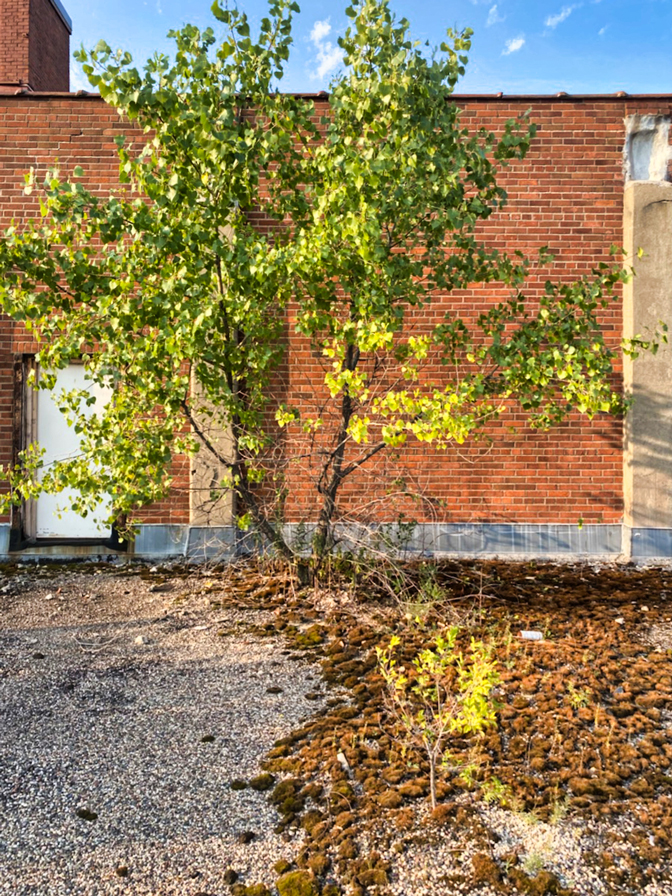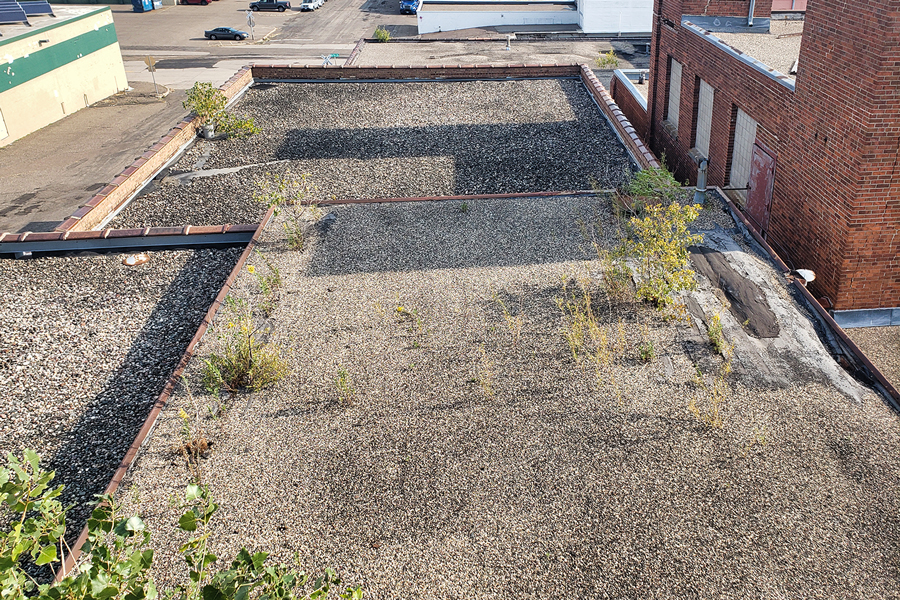Welcome to what many midwesterners consider the best (and shortest) season of the year – Fall! Fall is a busy season for commercial roof inspections. Building owners and property managers want to make sure that their roof is ready for the long winter that’s just around the corner.
Our inspectors find lots of things when performing commercial roof inspections. Some require immediate repairs. Others are quite interesting and can be downright bizarre.
This blog post will touch on some of the strange things our roof inspectors have come across over the years and which ones require attention before the snow flies.
Why is Fall such an important time for commercial roof inspections?
There are a few reasons why fall is a critical time for commercial roof inspections. First, temperature changes can cause problems for roofs that have even the most minor structural issues. As the temperature drops, water in the roof can freeze and expand, causing cracks and holes in the roofing materials to turn into leaks.
Snow and ice can also weigh down a commercial roof, causing further damage. It’s important to make sure that your roof can support the weight of any snow and ice that may accumulate on it during the winter.
Building owners need to perform any necessary repairs or replacements before the cold weather sets in. Waiting until Spring to have your roof inspected can leave you vulnerable to expensive repairs when your roof is covered in snow. No one wants their roof to fail in the middle of a blizzard!
What sorts of things do our roofers find when performing Fall commercial roof inspections?
SIGNS OF UNUSUAL OR EXCESSIVE WEAR
A common problem that our roof inspectors find is worn-out or weakened roofing material. Roofing membranes, seals, and flashings wear out over time and, if not repaired or replaced promptly, can lead to more serious problems down the road. Winter is especially hard on flat commercial roofs, and this is the time to find out if there are any weak spots that need to be addressed.
BUILDUP OF DEBRIS AND DRAIN BLOCKAGE
Debris and leaves can often build up on the roof over time, leading to drainage problems. If they are blocking any part of the drainage system and water isn’t able to drain correctly, it can cause damage to the underlying structure.
SIGNS OF ANIMALS
Mice and other rodents know that winter is coming and they are looking for a warm place to call home for the cold months ahead. Small cracks or leaks in your roof can create an entry point for unwelcome critters to get inside your building and set up shop. While they can get in through tiny gaps, those gaps will eventually get bigger, further compromising the integrity of your roof. If they can’t find an entry point, they’ll make their own, making a perfect way for future rainwater to get inside your building. Our inspectors will look for signs of these pests and potential points of entry.
WATER INFILTRATION AROUND VENTS OR OTHER ROOF PENETRATIONS
Water infiltration around vents or other roof penetrations is another common problem our inspectors discover during Fall inspections. As discussed in previous blogs, this can be caused by many things. There may already be signs of leaks inside the building. These issues require immediate repair before the snow flies.
LEAKS
Leaks are one of the main issues roof inspectors are looking for during their inspections. They often find leaks that may have been going on for months or even years without being noticed. We can’t state it enough – small leaks will eventually turn into major leaks. This is a huge concern, as leaks can cause severe damage to your building’s interior. Discovering leaks early and repairing them is your best defense against future roof failure.
POOLING WATER
Pooling water is another concern that our roofers will frequently encounter during their fall inspections. Pooling water can be a sign of a leaky roof or weakened roof membrane and can lead to major issues during winter’s freeze-thaw cycles. Any time you see pooling water on your roof, you should make sure to have it fixed right away.
INTERIOR WATER DAMAGE
When roof inspectors find signs of water damage inside the building, it’s always a sign that there is trouble outside. Water damage can cause extensive damage to the inside of your business, so it’s important to get it fixed as soon as possible. Insulation, drywall, and ceiling tiles tend to hold water, masking minor roof leaks, so it may not be evident in a casual walk-through.
MOSS OR ALGAE GROWTH
Moss or algae growth is another problem that our roofers often find during their inspections. Moss and algae typically occur on the roof, not in the building’s interior. This can be a sign that there is something wrong with your roof’s drainage system preventing water from exiting the roof.
MOLD, MILDEW, AND FUNGUS
Mold and mildew are other common problems that our roofers discover during Fall commercial roof inspections. Mold can grow in any environment with high moisture levels, and it can be harmful to your health. Both can be hidden in interior building materials or along exterior walls that have absorbed water from minor leaks. And as we’ve often said before, small leaks eventually turn into big leaks.
Damp, dark areas are also a breeding ground for fungus and can appear as mushrooms or shelf-like growths. They can be a sign of a roof leak or a foundation leak caused by seepage from poor drainage.
While humidity drops significantly in the winter months, the more humid conditions in fall can signal that your roof is not 100% intact.
BEER CANS, CIGARETTE BUTTS, EVEN TREES!!
 You might be surprised what sorts of things we find on our client’s roofs. Magazines, orthodontic retainers, bicycles, car tires, bags of garbage, iPods, unmentionables – we’ve seen it all!
You might be surprised what sorts of things we find on our client’s roofs. Magazines, orthodontic retainers, bicycles, car tires, bags of garbage, iPods, unmentionables – we’ve seen it all!
On a recent roof inspection, we even found a small tree and several seedlings growing!
If your tenants or employees have access to your roof, they may be accessing it more than you realize. But as long as we’re up on your roof inspecting it, we’ll check to see if there have been any dance parties that may have caused damage.
Whose mirror ball is this?
What can you do to prevent winter issues with your commercial roof?
There are a few things that you can do to prevent these common discoveries from causing issues with your commercial roof. The simplest solution is to schedule a Fall inspection and fix any problems as soon as they are found.
Next, sign up for a preventative maintenance program with a reputable commercial roofing maintenance partner like Mint Roofing.
If you’re already experiencing problems with your roof, don’t wait until it’s too late to fix them. Contact us right away to have us take a look at your roof. It may require repair, and the sooner you fix it, the less damage it will do in the long run.
If you’re looking for a reliable roofing contractor, contact our team today. We’d be happy to help you keep your roof in tip-top shape.
FAQs for Commercial Roof Inspections
Q: Why is Fall such an important time for commercial roof inspections?
A: Fall is a crucial time for commercial roof inspections for several reasons. Temperature changes can lead to structural issues as water freezes and expands, causing cracks and leaks. Additionally, snow and ice accumulation can stress the roof. Addressing these issues before winter sets in prevents costly repairs during snow-covered conditions.
Q: What sorts of things do roof inspectors find during Fall commercial roof inspections?
A: Our roof inspectors often discover various issues during Fall inspections, including signs of unusual wear on roofing materials, debris blockage in drainage systems, potential pest entry points, water infiltration around roof penetrations, leaks, pooling water, interior water damage, moss or algae growth, and mold, mildew, or fungus. Sometimes, they even find unusual items left on the roof, like beer cans, cigarette butts, or trees.
Q: How can debris and drainage problems affect commercial roofs?
A: Debris accumulation on the roof can lead to drainage issues, causing water to pool and damage the underlying structure. It’s crucial to clear debris to ensure proper drainage and prevent further damage.
Q: Why are leaks a significant concern during commercial roof inspections?
A: Leaks, even small ones, can lead to severe damage to the building’s interior. Addressing leaks early is essential to prevent costly repairs and protect your business from potential disruptions.
Q: What can building owners do to prevent winter issues with their commercial roofs?
A: To prevent winter roof issues, building owners should schedule a Fall inspection to identify and address problems promptly. Consider enrolling in a preventative maintenance program with a reputable commercial roofing partner like Mint Roofing. If issues are already present, don’t delay repairs, as addressing them sooner rather than later reduces long-term damage.
Remember, regular inspections and proactive maintenance are key to keeping your commercial roof in excellent condition and avoiding costly repairs down the road. Contact Mint Roofing today for reliable roofing services.


